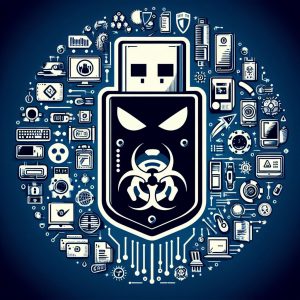I. Introduction to Antivirus Software
Antivirus software is an essential tool used to prevent, detect, search, and remove various types of malicious software, including computer viruses. At its core, antivirus software works by scanning files or systems to identify threats based on definitions of known malware. When a virus or other potentially unwanted program is detected, the antivirus will attempt to remove or quarantine the threat to prevent infection.
Definition of antivirus software
Antivirus software, sometimes referred to as anti-malware, is any software designed and developed specifically to detect, prevent, and remove malicious software including computer viruses, worms, trojans, ransomware, keyloggers, rootkits, spyware, adware, and other threats. These programs use techniques like signature-based detection, heuristic analysis, sandboxing, and more to identify threats.
Modern internet-connected computer systems face constant evolving threats from malicious software which can infect systems, steal data, encrypt files for ransom, transmit private information, or cause other types of harm. Installing and regularly updating antivirus software is a fundamental security practice for protecting computers and networks.

Purpose: to prevent, detect, search, and remove viruses and other types of malware
The main purpose of antivirus programs is to safeguard computers, servers, and systems from infection by dangerous malware. This includes:
- Prevention: Antivirus software uses real-time scanning and activity monitoring to block malware infections before they occur by detecting virus signatures, analyzing behavior of programs for signs of malicious intent, or identifying other indicators of threats.
- Detection: One of the primary jobs of antivirus software is to continuously check for malware across filesystems and memory using signature matching, heuristics, rootkit detection, and other techniques to identify threats that may exist on the system.
- Search and removal: When an antivirus program flags malware, it will typically quarantine the infected files or data to isolate the threat. Additionally, it will attempt to repair system alterations made by the infection or restore encrypted files after ransomware attacks. Some antivirus even search for dormant malware and remove threats before they have the opportunity to cause harm.
Having this malware protection in place can prevent considerable harm, from loss of sensitive documents and credentials to man-hours lost rebuilding systems compromised by viruses and worms.
II. Types of Antivirus Software
Many types of antivirus software leverage different technologies and approaches to protect systems from malware-based threats. Understanding the capabilities of various antivirus programs is important for selecting tailored solutions for individual needs.
Overview of various antivirus software types
There are a wide variety of antivirus solutions available, typically falling into a few major categories:
- Traditional antivirus uses signature-based detection alongside heuristics to identify malware. Effective at catching known threats but often fails to protect from zero-days and advanced attacks.
- Internet security suites bundle antivirus capabilities with a firewall, parental controls, anti-phishing, identity protection, and other security tools. Convenient for home users looking for an all-in-one option.
- Endpoint protection platforms combine antivirus with multiple layers of threat detection and response features aimed primarily at enterprise environments. Tools like threat intelligence feeds, sandboxing, EDR, and centralized reporting and management capabilities take endpoint protection to a higher level.
- Specialized scanners which focus on detecting specific sub-types of malware like ransomware or rootkits. Helpful as a secondary layer of malware defense.
- Cloud-based antivirus leverages always-updated threat data and processing power in the cloud for light-weight yet highly effective protection, especially appealing for devices with limited local resources.
With threats advancing at a rapid rate, modern antivirus solutions leverage a diversity of complementary approaches for defending endpoints across various attack surfaces.

Importance of antivirus software for computer and data security
Antivirus and anti-malware tools play an extremely important role in safeguarding the security of computer systems and user data in both consumer and business contexts. Given the level of disruption, financial damage, and privacy invasion malware infections can inflict, antivirus protection is fundamental to maintaining functional integrity and trust in information systems.
Without adequate antivirus protections, malware threats leave computers and networks vulnerable to:
- Data breaches exposing confidential documents and communications
- Identity theft enabling fraud and account takeover
- Extortion via ransomware rendering files and systems unusable
- Cryptocurrency mining sapping computational resources
- Supply chain attacks providing backdoors for further compromise
These outcomes can range from inconvenient to outright catastrophic. Antivirus solutions are the frontline defenders standing between endpoints and the relentless onslaught of malware which threatens productivity, security, and user privacy around the globe.
As malicious techniques grow more advanced, so too must cybersecurity tools and practices evolve to meet emerging threats. Antivirus or anti-malware software, when properly implemented and maintained, forms the foundation for establishing resilient protections in the escalating battle against malware.
III. USB-Based Malware Attacks
While many antivirus solutions focus primarily on securing host operating systems and files, threats targeting removable USB flash drives and exploits leveraging USB connections as an infection vector remain prominent attack surfaces which comprehensive protections must also address.
Discussion on the resurgence of USB drive malware attacks in 2023
USB-based malware went into relative decline earlier in the 2010s but has seen an uptick in cybercriminal use and innovation recently. According to cybersecurity researchers, 2023 has so far brought surging volumes of USB attacks, building upon significant spikes seen in 2022. In particular, incidents of “USB drop” attacks have risen drastically, taking advantage of natural human curiosity to trigger infections.
In these schemes, malicious actors strategically leave infected USB devices in public locations, enticing unaware victims to pick them up and plug them into computers, thus unlocking malware and potential access for attackers. This presents a challenge to organizations as careless or untrained employees without ill intent unwittingly introduce advanced threats past IT defenses focused more on blocking remote exploitation.
Further augmenting the damage of this resurgence are dangerous new USB-based exploits like Quintessential, specifically engineered to stymie detection by antivirus tools by hiding its code in keyboard emulation routines. The re-emergence of USB attacks has caught some organizations off guard as focus shifted more heavily to cloud and web-based threats in recent years while legacy attack vectors were not completely shut down.
Unique advantages of USB-based attacks, such as bypassing security mechanisms and infecting air-gapped systems
The very nature of USB devices, designed primarily for portability and external data transport, lend certain unique advantages to bad actors aiming to circumvent traditional network perimeter defenses using social engineering and physical access:
- Bypasses network security – Malware lurking directly on USBs sidesteps firewalls, intrusion prevention systems, and other network security layers intended to keep threats at bay.
- Defeats air-gapped systems – High security networks with strict physical separation from other endpoints rely fully on isolates systems bereft of outside internet access. But a single infected drive can defeat this protection.
- Enables stealthy persistence – USB firmware rootkits and boot sector viruses can embed themselves stealthily on USB devices at such a deep level, reformatting drives doesn’t fully remove the threat.
- Difficult detection – Multifaceted malware utilizing rootkits, encryption, and authentication makes identifying and studying advanced USB threats complex for defenders.
These factors allow USB-based attacks to slip past mitigations focused more exclusively on securing networked entry points, highlighting why vigilant cross-channel defenses remain so vital in the modern threat landscape.

IV. USB Antivirus Protection Solutions
With malware exploiting removable storage devices on the rise again, relying solely upon securing network perimeters or host antivirus defenses proves increasingly inadequate. Organizations must reevaluate protections for these direct-access threat vectors via layered USB antivirus solutions tailored to address the challenges of malicious USB-based exploitation.
Investigation of USB-based software attacks on host computers and USB storage devices
Malicious USB-based exploits target two primary segments: attacking host computers when infected USB devices connect to them, or compromising the USB drives themselves for deeper persistence and deliverability.
USB worms take advantage of autoPlay features which automatically execute code on connection. Ransomware scans available drives and encrypts files on removable media. Backdoors covertly allowing remote access can also transmit themselves via USB to hop air gaps.
On the USB side, schemes range from simple virus injection to sophisticated firmware rootkits or hardware implants undetectable from host scanning tools. Injected microcontrollers and other strategies also manipulate USB behavior to enable covert data collection, device tracking, password interception, or remote computer control.
These multilayered threats underscore the need to secure the full ecosystem surrounding USB activity, protecting both the integrity of host systems and USB media as well as fortifying the connections between them.
Importance of USB antivirus protection in the face of spiking USB drive malware attacks
Legacy host antivirus protection depending primarily on signatures and simple heuristics often fail utterly against novel USB-based malware not matching common patterns. Likewise, focusing solely on guarding USB devices using average consumer AV leaves mission-critical workstations open to corruption via compromised portable media.
With threats advancing rapidly as USB attack prevalence rebounds to former peaks, organizations must integrate robust protections purpose-built to shield the unique vulnerabilities in the USB attack surface including:
- Real-time scanning of attached removable media
- Advanced heuristic detection attuned to USB threat behaviors
- Automated quarantining of suspicious USB device firmware
- USB device usage policy restrictions
- Custom whitelisting of authorized USB devices
- Physical USB port blocking overrides
- Granular USB behavior analytics monitoring for anomalies
- Automatic encryption of USB drive contents
Only multidimensional protections spanning host systems, removable devices, AV detection logic fine-tuned for USB-borne malware, and administrative policy controls can address the complex challenges USB-based threats impose.
V. Conclusion
Antivirus and anti-malware tools serve as the foundation and first-line of defense for security strategies protecting endpoints from the real danger malware represents in both enterprise and consumer technology environments. As threats grow more cutting-edge, so too must cybersecurity tooling evolve using advanced heuristic logic, secure system design principles, and cross-channel protection schemes to meet sophisticated attacks head-on.
In particular, the resurgence of USB-based malware over the past two years highlights chronic gaps between legacy host endpoint security measures and emerging attack vectors which require focused controls purpose-built to account for the unique advantages and techniques leveraged by removable media-based threats.
Organizations relying heavily on antivirus protections must ensure mature solutions specifically hardened against USB-borne malware through robust storage media scanning, refined detection capabilities eliminating blind spots for removable drive attacks, automation to handle suspicious devices safely, and layered administrative policy controls governing all aspects of USB activity end-to-end.
Accounting for often overlooked threats creeping back into the spotlight remains imperative in upholding reliable, trustworthy security posture as the cyber landscape shifts over time. Dedicated controls resolving the shortcomings of conventional protections are vital not only for blocking disruption, but also for enabling business continuity, operational efficiency, and user trust by upholding endpoints resilient to escalations in cunning attacks targeting high-value computing assets.